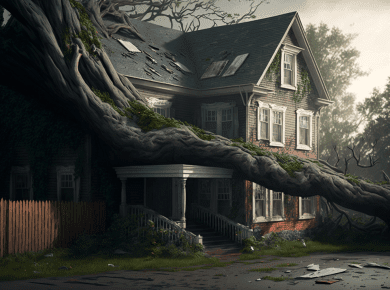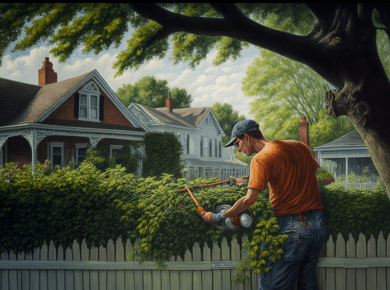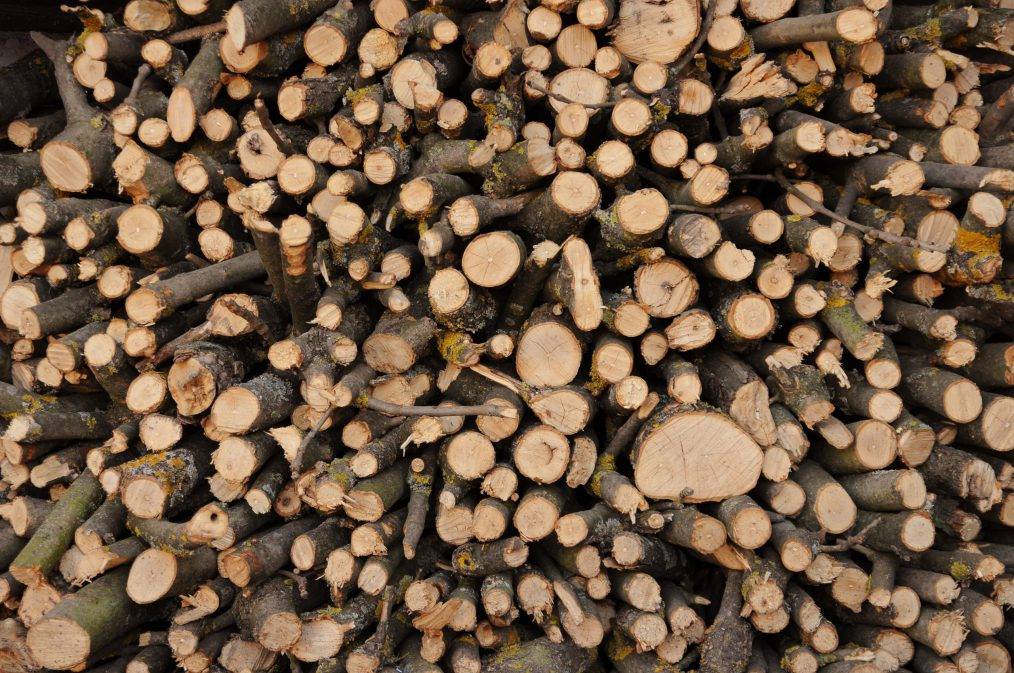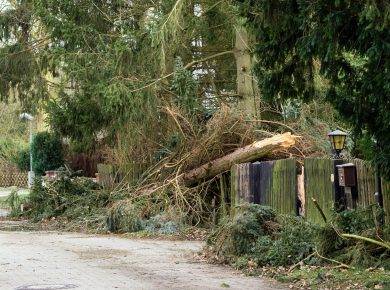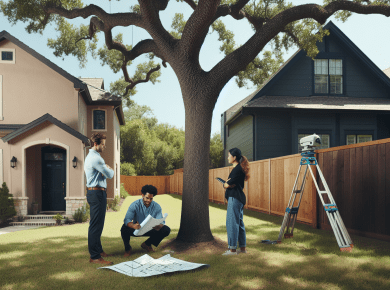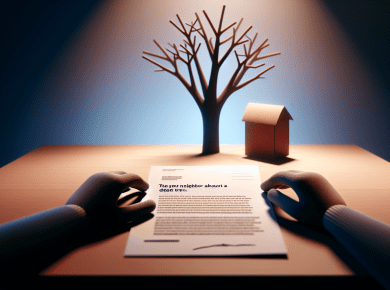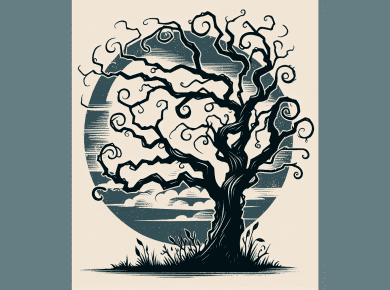Understanding Tree Hazards
A thorough understanding of tree hazards is essential for homeowners and neighbors. Dead or unstable trees can pose significant risks, and recognizing these hazards can help prevent accidents and property damage.
Importance of Tree Inspections
Regular inspections of trees are crucial. They help identify potential hazards, especially in large, old trees. Inspecting trees should be done carefully, assessing them from the bottom to the top. Key areas to evaluate include:
- Roots and Trunk Flare: Look for issues like damaged roots, shallow surface roots, or signs of the tree leaning due to root decay.
- Trunk Condition: Evaluate for signs of weakening or decay that could impact structural integrity.
- Branch Structure: Healthy branches are essential. Dead or broken branches pose significant risks as they can fall unexpectedly.
Homeowners are advised to seek the expertise of certified arborists for evaluation. Proper assessment is key, as improper treatment can lead to severe injuries or further damage to trees.
Signs of Hazardous Trees
Recognizing the signs of hazardous trees is critical for safety. Key indicators include:
| Hazard Signs | Description |
|---|---|
| Decay | Signs of rot or decay on the trunk or branches. |
| Insect Damage | Indicators such as sawdust piles or sap weeping from small holes on the trunk flare. |
| Broken or Dead Branches | Considered “widow-makers,” these branches can fall at any moment. |
| Leaning Trees | Trees leaning significantly may indicate root issues and instability. |
Being proactive in identifying these signs can help homeowners address issues before they escalate. For neighbors needing to discuss such concerns, drafting a thoughtful letter to neighbor about dead tree may be a useful first step. Proper communication aids in resolving potential disputes and enhances neighborhood safety.
Dealing with a Dead Tree
When a tree is suspected to be dead, it is important to address the situation promptly to prevent potential hazards to nearby properties and individuals. Proper communication and evaluation are essential in dealing with this issue.
Confirming the Tree Status
The first step when addressing a dead tree is confirming its status. Regular inspections of trees are crucial, especially for large or older specimens. Here are some signs to look for when determining if a tree is indeed dead:
| Indicator | Description |
|---|---|
| Leaf Loss | Lack of leaves during the growing season. |
| Cracked or Peeling Bark | Bark that is cracking or peeling could indicate decay. |
| Dead Branches | Presence of dead, broken, or brittle branches. |
| Leaning Trunk | A tree leaning considerably may have root decay. |
| Root Damage | Check roots for decay or damage from construction. |
Assessing the tree from the roots to the top will provide a comprehensive insight into its health status. If the tree is confirmed to be dead or poses a risk of falling, it is advisable to take the necessary steps to remove it, either independently or with professional help. Assuring the neighbor that actions will be taken to address the situation, along with thanking them for their notification, can facilitate a cooperative atmosphere.
For more information about signs of dangerous trees, refer to our article on what can I do if my neighbor has a dangerous tree.
Neighbor Notification and Coordination
Once the tree status is confirmed, it is important to notify the neighbor about the situation. This communication can be done through a formal letter, which not only expresses gratitude for bringing the tree’s condition to attention but also outlines the steps that will be taken moving forward. An appropriate template can be found in our resource on letter to neighbor about tree.
If there is any risk of the dead tree falling and causing harm, coordination with the neighbor becomes even more critical. This could involve:
- Arranging access for a professional assessment or removal.
- Discussing potential risks that the tree may pose to the neighbor’s property and safety.
- Exploring shared responsibilities if the tree straddles the property line, which could relate to legal discussions found in articles on trees on property line disputes and can you sue someone for cutting down trees on your property.
By fostering open communication about the dead tree’s status and coordinating any necessary actions, neighbors can work together to ensure safety and mitigate potential disputes regarding property management.
Assessing Tree Health
Assessing the health of a tree is paramount for ensuring safety in the neighborhood. Understanding the indicators of tree health and the potential risks associated with falling trees can help neighbors navigate property-related concerns more effectively.
Indicators of Tree Health
Several signs can indicate the health status of a tree. When assessing a tree, it is essential to examine it from the bottom to the top. Key indicators of tree health include:
| Indicator | Description |
|---|---|
| Bark Damage | Look for deep cracks, cankers, or mushrooms on the bark, which may signal deterioration. |
| Branch Condition | Dead or broken branches are referred to as “widow-makers” due to their risk of falling unexpectedly. |
| Insect Damage | Check for signs such as sawdust piles or sap weeping from small holes on the trunk flare, which can indicate stability issues. |
| Root Health | Evaluate the roots for damage, particularly from construction work or signs of root decay, which can cause the tree to lean. |
These indicators, if observed, can suggest that the tree may be at risk and might require further examination or immediate action.
Risk of Falling Trees
Falling trees present significant dangers, particularly if they are dead or severely compromised. The risk is especially pronounced with trees that display the aforementioned health indicators. Notable points include:
- Dead Trees: Trees that have been confirmed dead pose a serious hazard, as their structural integrity has been compromised.
- Weak Roots: Trees with shallow or damaged roots are at an increased risk of falling, particularly during storms or high winds.
- Environmental Factors: Heavy rain, snow, or strong winds can exacerbate the risk of a tree falling, especially if it is already unhealthy.
Neighbors concerned about a tree’s condition can refer to legal options regarding property issues and responsibilities. For guidance on communicating with neighbors about tree concerns, consider constructing a letter to neighbor about dead tree or exploring topics such as who is responsible for cutting overhanging tree branches and what can I do if my neighbor has a dangerous tree. Understanding these aspects ensures proactive measures can be taken to maintain a safe environment.
Legal Considerations
Navigating property laws related to trees can be complex, especially in Ohio. Understanding property rights and potential liability is essential for resolving issues involving dead or hazardous trees.
Ohio Property Rights and Trees
In Ohio, property owners hold specific rights concerning trees on their property. Owners are entitled to prune overhanging tree branches, but they must exercise caution to avoid trespassing or causing damage to the tree. Property lines are crucial in determining ownership, and the following points should be noted:
| Ownership Scenario | Property Rights |
|---|---|
| Trunk of the tree is entirely on one property | Owner fully owns the tree |
| Trunk straddles property lines | Shared ownership of the tree |
| Roots extend into another yard | Owner of the trunk is responsible, but neighbors cannot damage the tree |
If a neighbor’s tree encroaches upon your property or poses a hazard, reviewing local laws and potentially consulting with a legal expert can provide clarity. For more information about property lines and tree responsibilities, refer to our article on who is responsible for cutting overhanging tree branches.
Liability for Tree Damages
Liability issues often arise when a tree damages a neighbor’s property. If the tree is on the neighbor’s property and poses a risk of falling or has fallen due to neglect, the owner may be liable for damages. In Ohio, if one harms a tree on another’s property due to reckless behavior, it is classified as a fourth-degree misdemeanor, resulting in potential fines or imprisonment.
The financial consequences can be significant. A responsible party for damage could be liable for three times the value of the affected tree, in addition to repair costs. Individuals facing disputes involving tree damage can explore legal options by referring to our article on can you sue someone for cutting down trees on your property.
Understanding your rights as a property owner and the potential liabilities can help navigate disagreements about trees. It is advisable to document any communication regarding the state of the trees, including any letters sent, such as a letter to neighbor about dead tree and to seek legal guidance if necessary.
Effective Communication
Effective communication is crucial when addressing concerns about a dead tree on a neighbor’s property. Drafting a thoughtful letter can promote understanding and cooperation, helping to prevent disputes.
Neighbor Notification Letter Templates
Using a clear and concise letter template can facilitate communication with neighbors regarding tree issues. Here are two useful templates:
- Letter Template for Maintenance or Renovations
[Your Name]
[Your Address]
[City, State, Zip Code]
[Email Address]
[Date]
[Neighbor's Name]
[Neighbor's Address]
[City, State, Zip Code]
Dear [Neighbor's Name],
I hope this message finds you well. I am writing to inform you about a dead tree located on your property that poses potential hazards. I believe this tree may be a risk for falling and could cause damage to surrounding properties, including mine.
I wanted to discuss the possibility of having it removed for safety reasons. Please let me know your thoughts on this matter, as I am eager to resolve any concerns amicably.
Thank you for your understanding.
Best regards,
[Your Name]
- Notice of Upcoming Renovations or Noise Letter Template
[Your Name]
[Your Address]
[City, State, Zip Code]
[Email Address]
[Date]
[Neighbor's Name]
[Neighbor's Address]
[City, State, Zip Code]
Dear [Neighbor's Name],
I hope you are doing well. I am writing to notify you that I plan to remove a dead tree in my yard on [insert date]. This removal may cause some temporary disruptions, including noise and activity in the area.
I want to ensure you and your family are aware of this work and I appreciate your understanding as we prioritize safety in our neighborhood.
Should you have any questions or concerns, please feel free to reach out to me.
Best wishes,
[Your Name]
These templates can be easily customized to fit specific situations. For additional templates, refer to our resources on letter to neighbor about tree.
Preventing Disputes and Ensuring Safety
When addressing tree issues, proactive communication can prevent misunderstandings and promote neighborly relations. By informing neighbors about potential hazards—such as dead trees that may fall—residents can take collective action to maintain safety.
It’s essential to consult local laws regarding tree maintenance and liability, particularly to understand who is responsible for cutting overhanging tree branches and what legal actions may be available if disputes arise. Engaging in respectful dialogue can also mitigate hard feelings, especially in scenarios where there might be conflicts over property lines and tree ownership.
Encouraging neighbors to communicate with you should any issues arise can also foster better relations moving forward. Using effective communication strategies and templates can lead to harmonious solutions and a safer neighborhood for all.

